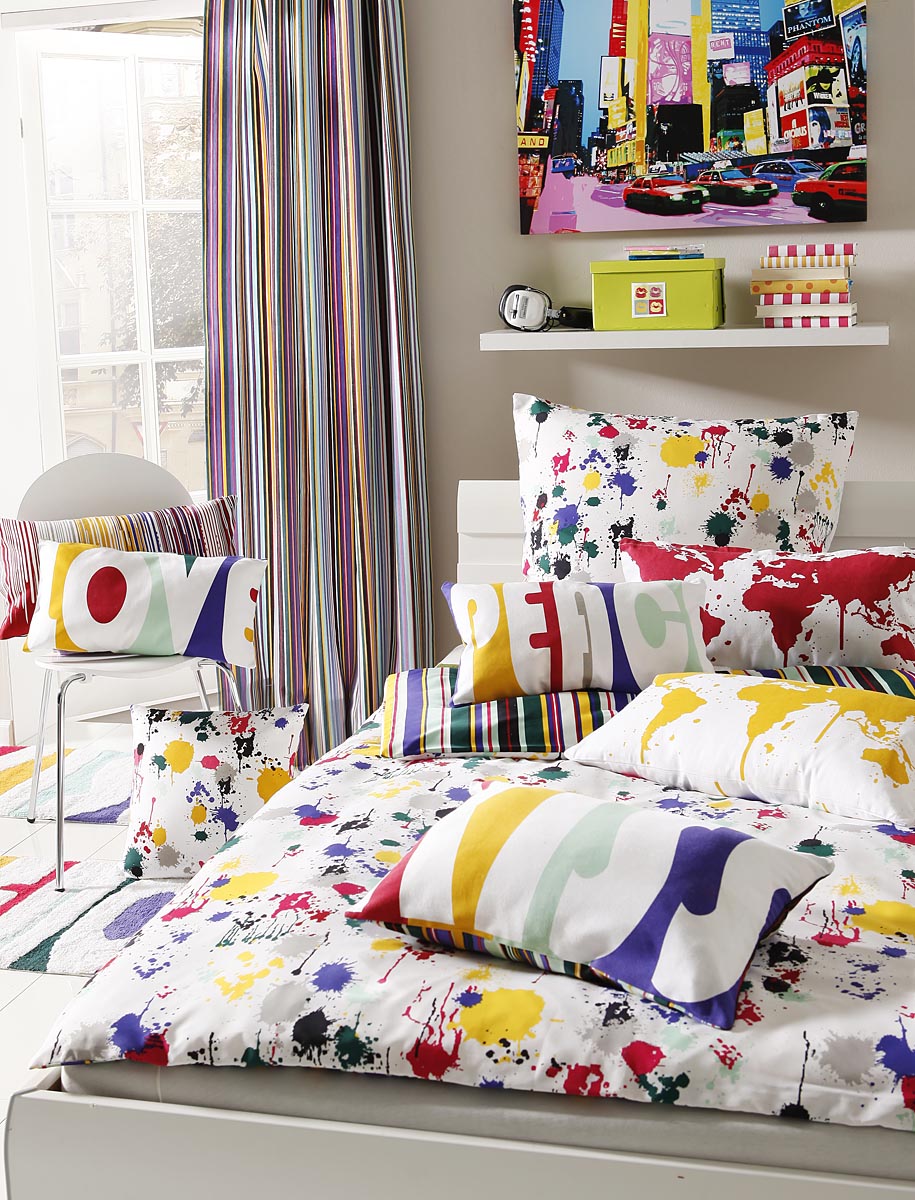FW
 The fourth edition of Australian International Sourcing Fair (AISF), Australia's foremost international sourcing fair, the only international sourcing fair in Australia was held from November 13 to 15, 2013. The event saw a large number of exhibitors from India. “The big change this year was the number of exhibitors from India. We had about 40 in 2010 and this year there were 105 exhibitors from India,” explained Julie Holt, Exhibition Director, Informa, organisers of Australia International Sourcing Fair said
The fourth edition of Australian International Sourcing Fair (AISF), Australia's foremost international sourcing fair, the only international sourcing fair in Australia was held from November 13 to 15, 2013. The event saw a large number of exhibitors from India. “The big change this year was the number of exhibitors from India. We had about 40 in 2010 and this year there were 105 exhibitors from India,” explained Julie Holt, Exhibition Director, Informa, organisers of Australia International Sourcing Fair said
Talking about the Indian participation, A Sakthivel Chairman, AEPC said, “The
participation has been growing. This year we had 105 participants out of which 32 were apparel and the balance were made-ups and handlooms. We are making a big effort to penetrate the Australian market and are doing business of about 150 million and aim to reach 200 million. Our target is to reach one billion within three years.”
Since China is becoming expensive, Australia is looking at India. During the quota regime, Indian exporters were concentrating on Europe, US and Canada. “Now we are looking at non traditional markets like South Africa, South America and Australia. We have done a big show in Japan and are going to Israel. After two or three years we will have a share in other markets too. India has raw material, delivery and a designing strength. This matters a lot in apparels sector,” said Sakthivel.
India is very strong in home textiles and finished garments. That’s the main strength of Indian companies. Further there is a cultural familiarity between India and Australia. Both were ruled by a colonial power. “We like doing business with people we are comfortable with. So, India has a great chance to erode some of China’s share,” adds Holt. Elaborating on the Indian perspective, Holt says, “We have had extensive discussions with AEPC and see significant growth in men’s and women’s apparel including scarves. We will focus on handicrafts and made-ups. It will probably become an exclusively apparel and home textile show. In home fashion and furnishing fabrics, the level of participation from India varies. But this show is only in its fourth edition. We are confident it will pick up trajectory. I will go to India in January and have conversations with export councils to ascertain their interest in this show. That will help me get more buyers for next year’s show. But I think, home textiles from India is a growth area. The agreement would place our co-operation beyond a one year horizon. It would be commercial cooperation at this point.”
India exports 50 per cent to Europe and 25 per cent to the US. The remaining 25 goes to non traditional markets. “We want to increase this share to 35 per cent. In overall exports the first six months of this year we already have a growth rate in dollar terms of 14 percent. This year we may end up doing 17.5 billion. In each market, we should have at least a 10 or a 15 per cent share. We are not growing at all in basics because basics production in India is very expensive. Also, we don’t have productivity in basics. But we are good in mid fashion and high fashion,” adds Sakthivel.
Apart from India, Pakistan too has great potential as a producer of home textiles. Bangladesh is another strong player in the home textiles zone. Indonesia is strong in accessories whereas Vietnam, participating for the first time had a successful show.
www.aepcindia.com
Cellulosic fibre production is set to continue growing rapidly in the coming years, says ‘Textile Outlook International’ done by global business information company Textiles Intelligence. Faced with soaring raw cotton prices in 2011, many textile and apparel producers switched to manmade fibres or started to use a greater proportion of manmade fibers in blends. Significantly, cellulosic fibre production worldwide rose by a healthy 11.0 per cent in 2011, compared with a 3.7 per cent rise in global demand for fibers of all types. Furthermore, cellulosic fibre production grew by an even faster 12.0 per cent in 2012, while world fibre demand continued to grow by 3.7 per cent.
Demand for cotton, fell by 7.0 per cent in 2011-12 season (August 1, 2011 to July 31, 2012) and rose by only 2.3 per cent in the 2012-13 season. Demand in China alone fell by 3.3 per cent as the Chinese government’s policy of supporting domestic cotton prices at levels, which are higher than world prices undermined cotton’s competitiveness in the country.
The rise in global cellulosic fibre production in 2012 was due almost wholly to expansion in the manmade fibre industry in China. In percentage terms, Chinese cellulosic fibre output rose by 17.3 per cent in 2012 after growing by 19.5 per cent in 2011.
Looking ahead, global cellulosic fibre capacity is expected to rise by 13.7 per cent in the 21 months between March 2013 and December 2014 while demand for cotton in the 2013/14 season is projected to rise by a much slower 2.1 per cent.
TEXbase, a leading provider of web-based compliance, quality and materials management software solutions for brands, retailers and consumer product companies recently announced a broad sponsorship with the American Apparel & Footwear Association (AAFA) for 2014.
The AAFA is an advocate for over 1000 brands and 425 companies from the US apparel and footwear industry. Annually, the AAFA hosts seminars, programs and events to educate, advocate and advance solutions to key issues and trends facing the industry. As an elite sponsor, TEXbase will collaborate with the AAFA and its members to achieve advancements in the areas of product quality management, compliance and supply chain transparency.
TEXbase will participate in many AAFA events throughout 2014 focused on these critical industry challenges beginning with the product safety and compliance seminar in Marina del Rey, CA on January 29, 2014, where TEXbase will exhibit and demonstrate its brand and supplier solutions.
Kevin Burke, President and CEO, AAFA said, “Partners like TEXbase offer the insightful thought leadership and strategic intelligence that helps brands and retailers be more successful in the global marketplace. We appreciate TEXbase's continued commitment to AAFA's mission of promoting best practices and solutions to the regulatory challenges the U.S. apparel and footwear industry faces every day. We look forward to continuing our work with TEXbase as an elite sponsor this year."
Oxfam targets Australian brands including Bonds and Just Jeans to take responsibility for their supply chains in Bangladesh. The charity group released a ‘naughty and nice’ list of clothing brands that operate in Bangladesh but have failed to sign an international accord on fire and safety that ensures regular inspections of the Bangladeshi factories. Daisy Gardener, Oxfam's corporate accountability and Fair Trade adviser for Oxfam said, “"In the lead-up to this Christmas, we would like to see more companies sign up this accord. It only takes one incident, one fire or one collapse for workers' lives to be lost.”
Pacific Brands, which owns Bonds, Berlei, Jockey, Voodoo and Clarks, has yet to sign the accord. Just Group, which owns Just Jeans, Jay Jays, Peter Alexander, Portmans, Dotti and Jackie E, has also not signed, while Rivers has only committed to sourcing ethical cotton.
Discount retailer Best & Less sources garments from 15 factories in Bangladesh but has also not signed the accord. A spokesman said the company had ‘no immediate plans to join’. Kmart is the only Australian company that has promised to publish the location of its factories, further increasing the company's transparency.
Rachel White has won the ‘SDC International Design Competition 2013’ held in Mumbai. Twenty-three-year-old White is a textiles design graduate from the National College of Art and Design in Dublin, Ireland. She was chosen from a list of finalists from Australia, Hong Kong, India, UK, Pakistan, Singapore, Thailand, Bangladesh and South Africa. All entries had to show evidence of using colour as an integral component of the design process as well as incorporating some aspect of this year’s theme of ‘fashion for the future’. White’s work, titled ‘Raw Colour’, showed a real understanding of the brief as well as innovative use of colours.
White goes home with the £1,000 cash prize and the Veronica Bell trophy. The trophy is in honour of the late Veronica Bell, (an SDC past-president) to acknowledge excellence in the field of colour and design. On winning the prize,
White said, "I am absolutely thrilled to have been awarded first place in the Grand Final of the SDC International Design Competition 2013. Winning the Veronica Bell Trophy, in such an inspiring location is a great honour. A huge thank you to the SDC and everyone involved who helped make the occasion such a success.”
Graham Clayton, Chief Executive of SDC adds, “The SDC is a committed supporter of young designers. We work with educational institutions across the world to ensure that the next generation of students has a clear understanding of colour. It is always exciting to see the competition entries and on behalf of the SDC, I would like to congratulate all the students on such inspiring designs.”

SDC (Society of Dyers and Colourists) is the world’s leading independent, educational charity dedicated to advancing the science and technology of colour. On their recent visit to India SDC’s CEO, Graham Clayton and President, Richard Straughan spoke to Relin Hedly about sustainability and technological evolution in sustainability
What is the process of sustainability?
GC: The supply chain of sustainability is a complex process. People think that natural is best. In terms of sustainability and impact on environment, natural may not necessarily be the best. If it fades, then it does not have a long life. Its complex but I think people are moving in the right direction and more conversations are happening across the entire supply chain. The discussion is stretching back to the manufacturing stage.
What has been the evolution of technology in sustainability?
RS: There is a lot of evolution taking place on the dyestuff side like wash up performance of reactive dyes etc, which is making dyestuff expensive. There is a cost factor against performance. However, things are changing and retailers can drive technology and sustainability. Further there are many areas that can be focused on the retail and manufacturing side apart from environment problems that needs to be dealt with.
GC: I came across a unique microwave technology where the entire clothing is put on a conveyor belt and gets disassembled once it’s out. This clothing can be easily sorted, graded and there is lot to be done in terms of fabrics, extraction of dyes, there is still some work to be done. This shows that the technical developments are moving in the right direction.
Is sustainability an efficient way of making money?
GC: If you look at the whole supply chain it is an efficient way of making money but certain parts of the supply chain may end up paying more. There are standards involved and when you put standards in place there is improvement in quality, which helps in reduction of waste. In short, putting in standards saves money. So you have to see what the effect of the standard is on your production and not just the cost.
RS: If you have good design and quality the lifecycle of the garment is longer. The most important cost benefit is for the next generation. We have to educate and set an example for them.
What are the different challenges that India needs to overcome?
RS: In India, we have to encourage people to come back into the industry. The industry does not have a good reputation of keeping young people because there are cleaner jobs. For example, pharmaceutical has a much cleaner environment, we have to improve the environment for young people to come through and also train them better. If we get the right calibre of people, then we can do more research not only in dyestuff manufacturing but also in processing because these people are the future. India is not the only country, Europe is also facing similar issues. We have to address them and that’s what the SDC is all about: ‘Education’. It is not difficult to persuade Indians that they need training, the issue is what training they need. The best training is a two way communication. Training is not something that needs to be seen as a problem but as an opportunity to move forward. What we have seen is that people are going more into the fashion side but not many are going into the colouration side. They are not training them well and that’s one of the things that need to be addressed.
There is a shift in manufacturing from the West to East? Comment.
RS: There are opportunities for east and west to meet. You have manufacturing in the east with partners in the west. This kind of co-operation will benefit both the parties. We will never get the volumes back because it’s still a cost performance from the east. But east and west working together can actually have that bounce. If we want a new design or a change in colour that can be done in Europe but volume production will come from the east because of cost performance but there will be more cooperation in technology transfer.
Tell us about SDC’s initiatives
GC: SDC was in India for the International Design Competition final. These competitions have helped students to raise their standards. The society also works with school children in UK and helps them understand colour at a very young age.
RS: We appreciate the support received from two fashion institutes in India, BD Somani and Nirmala Niketan. The fashion houses we visited have given the students a new outlook.
The melt down of Pakistan’s rupee against the US dollar has negatively impacted prices of raw cotton prices which rose by Pk Rs 200( 1.84 USD)/ (Rs 114.7)/40kg in the lower grade category and Pk Rs 100 ( 0.92 USD) / (Rs 57.40)/40kg in the higher grade category, in the Sindh and Punjab regions of the country. The Pakistani rupee value on October 31, 2013, was Pk Rs 106.86 (Rs 61.33) for one US dollar, which was quoted on November 30 at Pk Rs 108.46 (Rs 62.25) for one US dollar.
According to the Pakistan Cotton Ginners’ Association fortnightly report on cotton arrivals, the cotton arrivals into ginneries by November 15, 2013 remained 9.518 million bales compared with 8.519 million bales during same period last year depicting an increase of 11.73 percent year-on-year.
In 2012-13 cotton season, Pakistan’s cotton output fell by 12.81 per cent year-on-year to 12.915 million bales, compared to the previous season’s production of 14.813 million bales, mainly because of less sowing of the crop.
www.pcga.org
A new finishing technology that inhibits the development of odour-causing bacteria on textiles and clothing uses a thin film of water to create an anti-microbial barrier. The Pluma technology from Sanitized AG has been developed in conjunction with Empa, the Swiss Federal Laboratory for Materials Science and Technology.
Odours are generated by the metabolic by-products of naturally occurring bacteria and, for what is thought to be the first time, the Pluma technology has tackled the problem by inhibiting the build-up of bacteria on the fibre surface. The surface of the textile is coated with a special polymer that forms a microscopically thin film of water. This prevents bacteria from collecting on the textile fibres and ensures existing bacteria are rinsed away during hand or low-temperature washing.
The Pluma innovation has also received a Swiss Technology Award.
Sanitized AG already produces a range of antimicrobial fabric finishes used by companies including Levi Strauss, Marks & Spencer and Carhartt.
www.empa.ch
The government of Zambia is looking for local and foreign investors to invest in Mukuba Textiles and Swarp Spinning Mills in Ndola in a bid to revive their operations. The government is of the opinion that investments in these two mills will add value to the cotton industry in Zambia.
The move comes after shrinkage of cotton value chain led by closure of Mukuba Textiles and Swarp Spinning Mills several years ago. The aim now is to revamp Mukuba Textiles and Swarp Spinning so that the cotton value chain from production to ginning is complete and leads to employment generation.
Through a new strategy to rebuild the textile value chain, government will focus on promoting and showcasing the country's manufacturing potential yielding from crop diversification. It believes that this strategy would help in the industry go back to the days when cotton was one of the major sources of employment.
www.mukuba.com
As part of the 21st edition of the international textile and fashion fair, ‘Textile Salon 2013’, the government of the Russian city of Ivanovo conducted its first ever professional contest for tailors ‘Fashion Lab’, where they competed for the best home-tailored clothing collections.
The ‘Textile Salon 2013’ event, organized by the regional public organization club ‘Working Girl’, the government of Ivanovo region, Ministry of Industry and Trade of the Russian Federation, along with the support of the Association of Entrepreneurs of Textile and Garment Industry of Ivanovo and the National Academy of Fashion Industry (TITLE), saw participation from various textile and clothing enterprises from the Russian region as well as Belarus, Latvia, Poland and Germany.
Several seminars on new and emerging fashion and textile trends were also held parallel to the event where entrepreneurs exchanged information regarding the latest trends and technologies in garment manufacturing.













